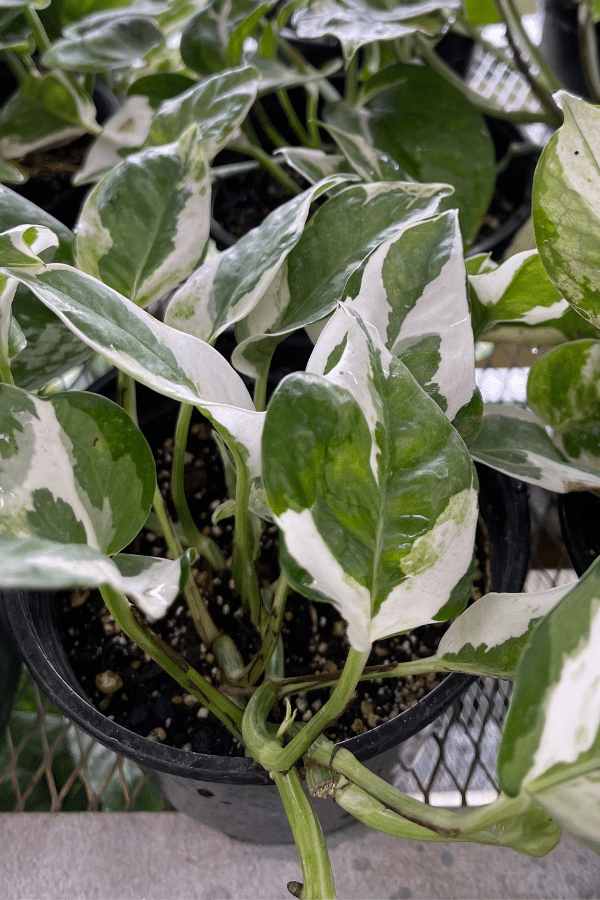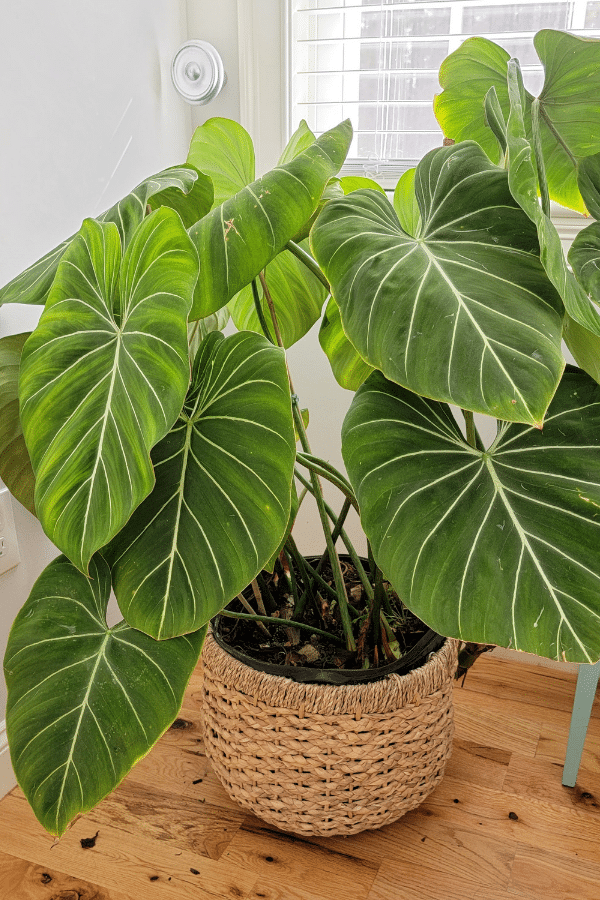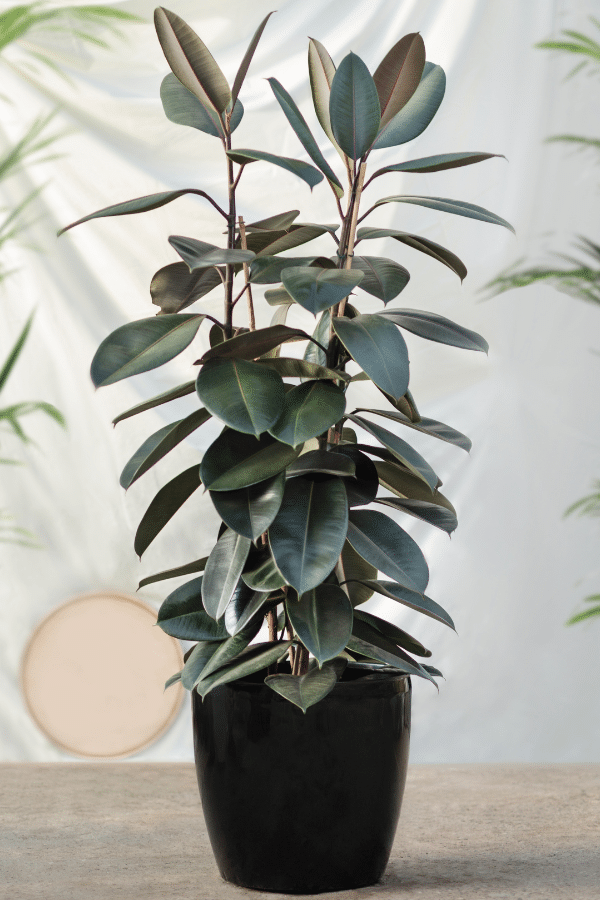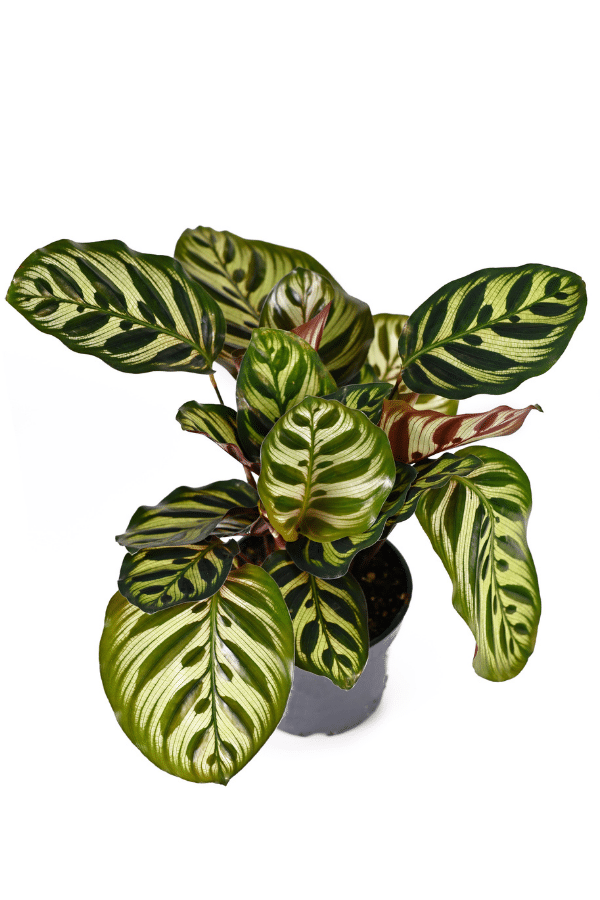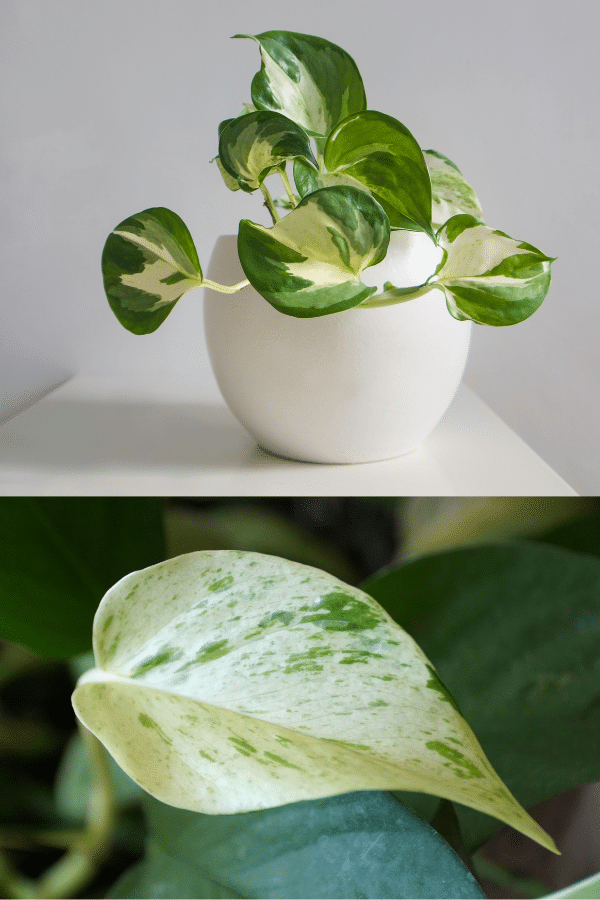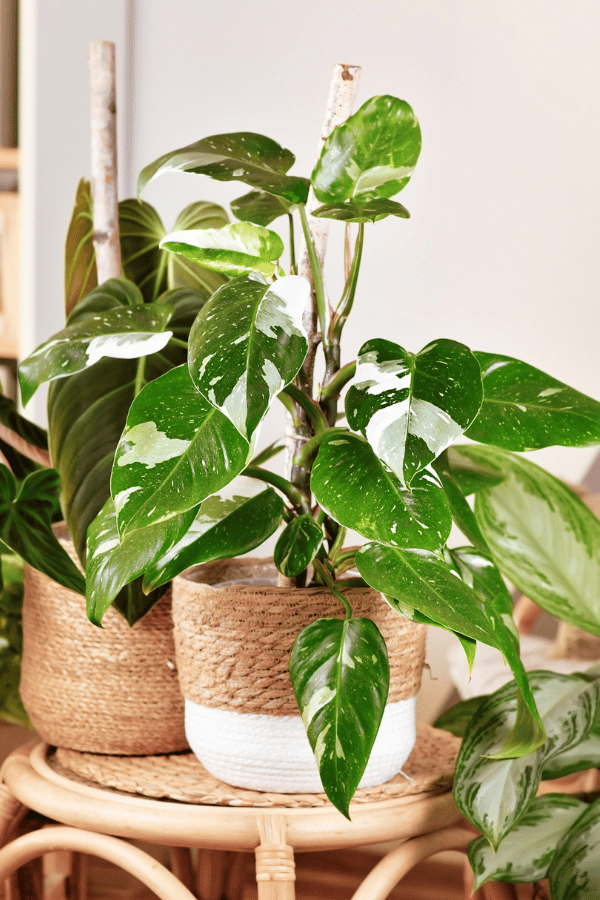Alocasia Polly
Scientific Name: Alocasia Polly, Alocasia Amazonica
Common Name: African Mask Plant
Alocasia Polly care is a moderate to hard plant to grow. Not for beginners, you may need a little bit of plant experience before getting along with the African Mask Plant. This Alocasia plant needs proper lighting, humidity, temperature, soil, and water to give it its best life. If you feel up for a challenge or are an experienced plant parent, give this Alocasia Amazonica plant a try, it will be sure to give depth and interest to your plant collection.
Quick Care Overview
| Common Name | African Mask Plant |
| Scientific Name | Alocasia Polly, Alocasia Amazonica |
| Family | Araceae |
| Origin | Australia and Asia |
| Growth Rate | Medium |
| Identification | Glossy, dark green, arrow-shaped leaves with white veins |
| Height | Up to 20 inches tall |
| Soil | Porous, humus-rich soil |
| Water | Keep soil moist but not over-saturated |
| Temperature | 65-80F |
| Sunlight | Bright indirect sunlight |
| Toxic to Cats & Dogs | Yes |
| Toxic to Humans | Yes |
| Pests | Spider mites, mealybugs |
| Diseases | Root rot |
Below we will dive deep into this Alocasia Polly care guide.
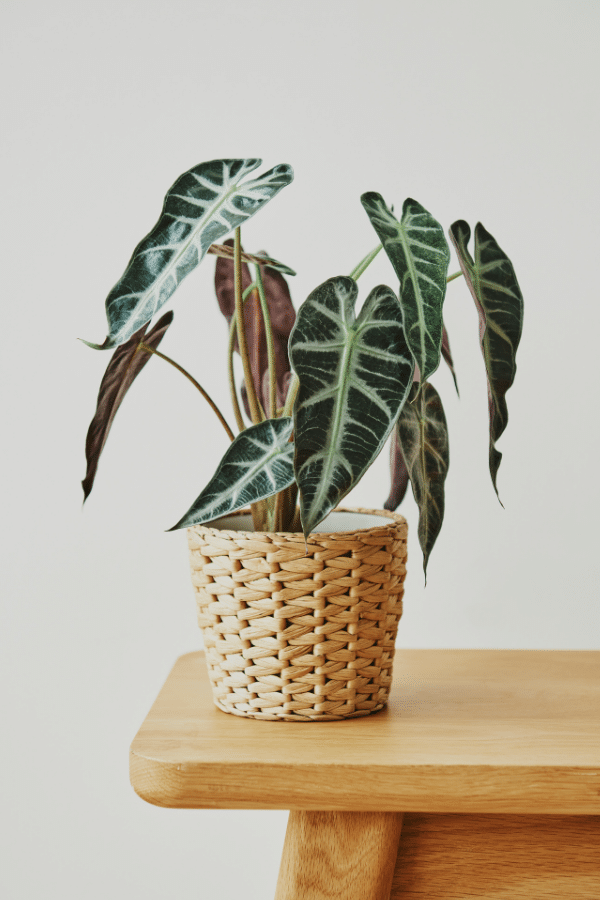
Alocasia Polly History
Commonly known as the African Mask Plant, Elephant Ear, Kris plant, or Alocasia Polly, Alocasia Amazonica is a hugely popular houseplant frequently featured on social media sites. Hailing from Australia and parts of Asia, this Alocasia plant is a rare tropical plant that is not said to be a good choice for beginners. Requiring some extra special care and TLC, you will be rewarded with a stunning, gorgeous evergreen tropical plant with fascinating foliage if you are willing to give this beauty the care it needs.
Alocasia Polly Identification
Alocasia Polly is easily identified by its unique triangular foliage. Leaves are glossy, dark green, arrow-shaped, lobed, and possess beautiful white veins.
Alocasia Polly Growth Facts
Alocasia Polly is considered to be a moderate grower, only growing at an average pace. It is important to remember that this plant will not require fertilizer to grow steadily. Alocasia Amazonica can grow a few new leaves each month during the active growing months.
How Big Does an Alocasia Polly Get?
The African Mask Plant may grow up to 20 inches tall and 20 inches wide.
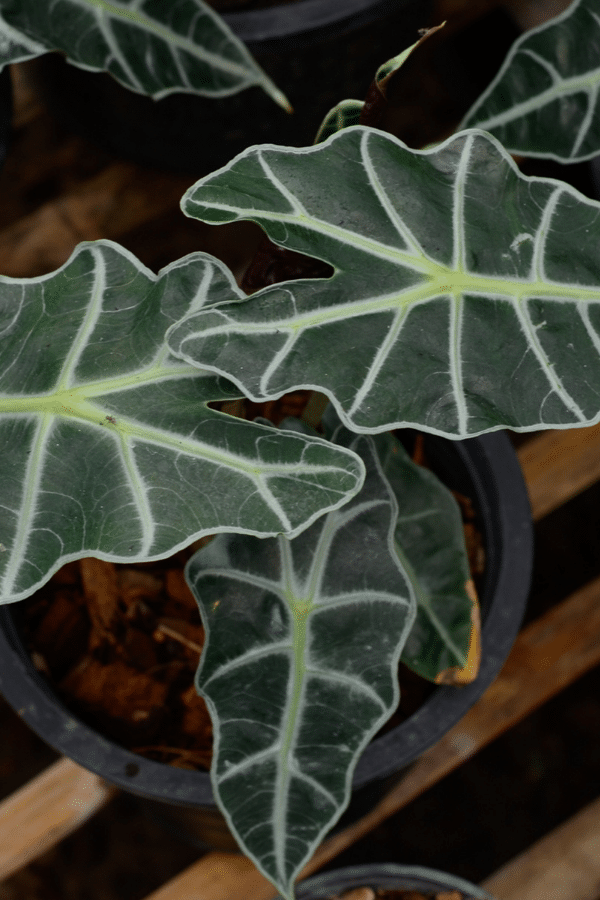
Alocasia Polly Care
While this plant is not considered to be a good choice for beginners, with proper Alocasia Polly care including humidity, light, and temeprature, you will have a stunning addition to your collection of houseplants.
Alocasia Polly Soil
The African Mask Plant will perform best in a porous, humus-rich growing medium that maintains excellent water retention capabilities. A standard potting soil with incorporations of coco coir or peat moss will provide the oxygenation and room for roots to grow.
Alocasia Polly Fertilizer
Being a moderate grower, this Alocasia plant requires little to no fertilization to have lush foliage. This plant may be fed monthly during the growing season by utilizing a balanced liquid fertilizer indicated for houseplants. Ensure to follow all label instructions. Do not fertilize in winter or directly after repotting.
Alocasia Polly Watering
The Polly plant should be watered regularly and should not be allowed to dry out. Moderate moisture should be maintained, but the plant should not be oversaturated, as this may lead to root rot. Ensure that the top 1-2 inches of soil have dried before rewatering and that the plant is not sitting in excess water within the drainage tray. It is important to note that overwatering may lead to significant issues with this Alocasia.
Alocasia Polly Light Requirements
Like many other houseplants, the African mask plant likes to be kept in bright indirect light. It has been noted that this Alocasia can tolerate more direct light than many of its other tropical plant companions. However, too much intense direct sunlight may cause scorching of the plant’s leaves. The African Mask Plant may wilt quickly when not cared for properly. This plant will also tolerate dappled light but performs best with several hours of indirect light throughout the day.
Alocasia Polly Temperature & Humidity
Alocasia Polly prefers to remain in tropical-like conditions as a tropical plant. When kept in too cool of conditions, this plant may become inactive, or its growth may be stunted. One of the most challenging aspects of keeping this plant happy is its high humidity requirements. Therefore, using a pebble tray, misting, or humidifier is pertinent to keep this plant happy.
Repotting Alocasia Polly
Being a moderate grower, the African Mask Plant should be repotted every 2-3 years or whenever the plant’s roots are seen sticking out of the drainage holes. This plant prefers a tight-fitting container. Be sure to purchase a new container that is only 1-2″ larger in diameter than the original pot, as this plant does not prefer to have excess container space. Be sure to pick a pot with drainage holes. To repot, simply remove the root ball, place it in a new pot, refresh the soil and lightly tamp, and water thoroughly. Do not place your freshly repotted plant in direct light. Instead, allow it to settle and readjust in indirect sunlight.
Alocasia Polly Maintenance & Pruning
Best Alocasia Polly care does not require much in the way of pruning. However, they may be periodically trimmed to encourage growth. Use sterilized shears to prune more room for stems and leaves to develop. Dust the leaves weekly to let the plant absorb the light.
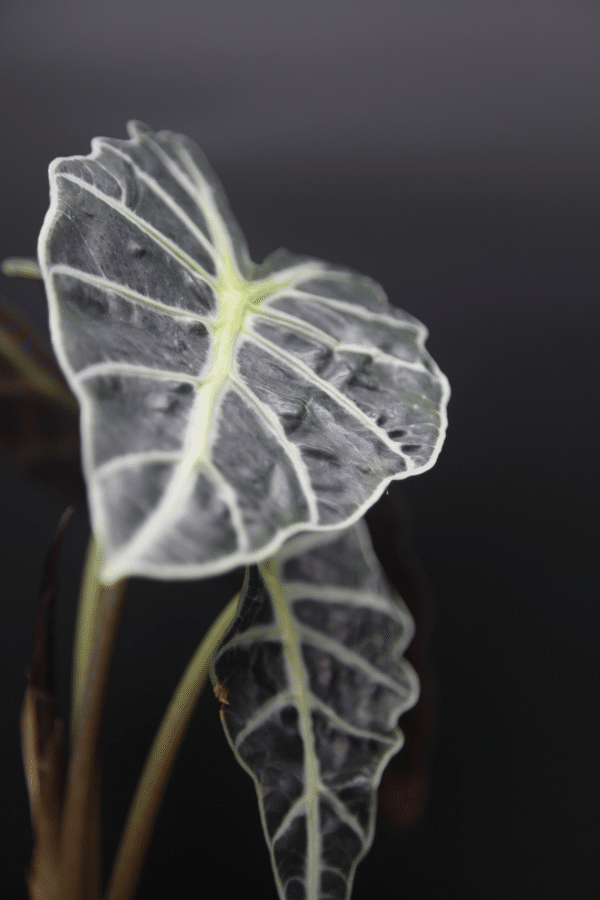
Alocasia Polly Propagation
Propagation of Alocasia Polly is easy through rhizome division. To propagate, remove the root system and plant from its container. Gently shake the plant to remove some excess soil. Then, using a sharp blade, cut pieces of the plant’s rhizome into separate clumps. Allow your rhizome pieces to callus overnight. The following day, plant the rhizome clumps into the soil in their own container. Place in indirect light. Within a few weeks to months, your plant will develop new roots and a happy new plant will be growing.
Alocasia Polly Toxicity
The African Mask Plant is considered toxic due to calcium oxalate crystals and should never be consumed.
Toxicity to Humans
Alocasia Polly is considered toxic to humans and should not be ingested. Ingestion of the plant may cause blistering, burning, pain, nausea, vomiting, and other medical issues. Therefore, no portion of this plant should be consumed.
Toxicity to Cats & Dogs
Alocasia Amazonica is toxic to pets and should not be ingested. However, if you suspect that your pet has consumed any portion of this plant, contact your veterinarian or animal poison control immediately.
Alocasia Polly Problems
Alocasia Polly Leaves Turning Yellow
Yellow leaves is typically an indicator of overwatering or overly saturated soil that is not draining correctly when it comes to Alocasia Polly. Alternatively, the yellowing of the leaves may be due to a lack of sunlight.
Alocasia Polly Leaves Turning Brown
The most common cause of brown spots on foliage of the African mask plant is due to a lack of humidity. Therefore, for this Alocasia, the humidity levels must be kept high by way of misting, a pebble tray, or a humidifier. Plant leaves may be misted daily.
Alocasia Polly Diseases
The number one cause of the African Mask Plant’s disease is watering issues and may be avoided when watered correctly. Overly wet soils may lead to fungal and bacterial root rot and decay. Signs of root rot include patches of black spots that appear at the base of the plant’s foliage. Ensure that your plant is not overwatered and that it has adequate drainage.
Alocasia Polly Pests
The number one pest culprit to affect Alocasia Amazonica is spider mites and mealybugs. Isolate the affected plant and treat it with neem oil or alternative pesticide upon identifying an infestation. Ensure that you follow all label instructions. Neem oil may also be used on the Alocasia plant as a preventative measure.
FAQ
Can Alocasia Polly Go Outside?
Alocasia Polly plants can live outside in hardy zones of 10-12, giving them part shade to part sun. If you live north of these hardy zones, you can let it grow outside for the summer months but be sure to bring this plant inside for winter.
How Do You Keep Alocasia Polly Alive in the Winter?
Alocasia Amazonica Polly goes into dormancy during the winter months. Provide the plant with warm temperatures, reduce watering, and halt any fertilizer until spring.
Where Should Alocasia Polly be Placed?
Alocasia Polly likes to be placed in bright indirect lighting and since it won’t grow to be too tall, a spot on an end table or in an office with windows would be ideal.
Is Alocasia Polly a Difficult Plant?
Alocasia Polly is good for plant parents with medium experience, but not a good plant for beginners as it can be finicky and difficult to grow.

